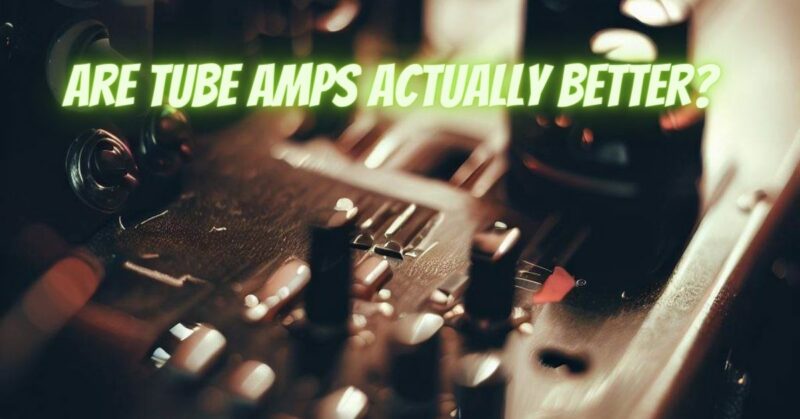In the realm of audio equipment, debates about the superiority of different amplifier types have persisted for decades. Tube amplifiers, known for their warm sound and classic aesthetics, often attract fervent enthusiasts who claim their superiority over solid-state counterparts. However, the question remains: is there factual evidence supporting the alleged superiority of tube amplifiers? This article aims to delve into the claims and provide a balanced perspective on the matter.
Understanding Tube Amplifiers
Tube amplifiers, also known as valve amplifiers, use vacuum tubes to amplify audio signals. They have a distinct sonic character characterized by their harmonically rich sound and pleasant distortion when pushed to their limits.
Claims of Tube Amplifier Superiority
Enthusiasts of tube amplifiers often highlight the following claims:
- Sound Character: Tube amplifiers are renowned for their warm and natural sound, often attributed to the harmonic distortion they introduce, which some listeners find appealing.
- Dynamic Range: Advocates argue that tube amplifiers excel in reproducing a wide dynamic range, capturing both subtle nuances and powerful crescendos.
- Smooth Distortion: Tube amplifiers tend to exhibit gradual and pleasing distortion as they approach their maximum output, which some listeners interpret as more musical than the abrupt clipping in solid-state amplifiers.
- Aesthetics: The nostalgic visual appeal of glowing vacuum tubes and vintage design can enhance the overall listening experience for enthusiasts.
The Reality: Balanced Evaluation
While tube amplifiers do have certain sonic characteristics that appeal to some listeners, the claims of their superiority require a more balanced evaluation:
- Sound Character: The perceived superiority of tube sound is subjective. While some prefer the harmonic distortion of tubes, others prefer the clean and accurate sound of solid-state amplifiers.
- Dynamic Range: Solid-state amplifiers can offer equally wide dynamic ranges when designed properly. Advances in technology have enabled solid-state amplifiers to replicate this characteristic effectively.
- Smooth Distortion: While some listeners appreciate the gradual distortion of tube amplifiers, others prefer the accuracy and transparency of solid-state amplifiers that strive to minimize distortion.
- Aesthetics: The visual appeal of tube amplifiers is a matter of personal taste. Aesthetic preferences do not directly correlate with audio quality.
Scientific Analysis
Scientific studies comparing tube and solid-state amplifiers have produced mixed results. Some controlled listening tests have shown that participants cannot consistently differentiate between the two types in blind tests, highlighting the influence of psychological biases on perceived superiority.
The claims of tube amplifier superiority are subjective and often influenced by personal preferences, biases, and nostalgia. While tube amplifiers indeed offer a unique sound character, solid-state technology has advanced significantly, narrowing the gap in sonic performance. Ultimately, the choice between tube and solid-state amplifiers should be based on individual preferences, critical listening, and objective evaluations rather than unfounded claims of superiority.


